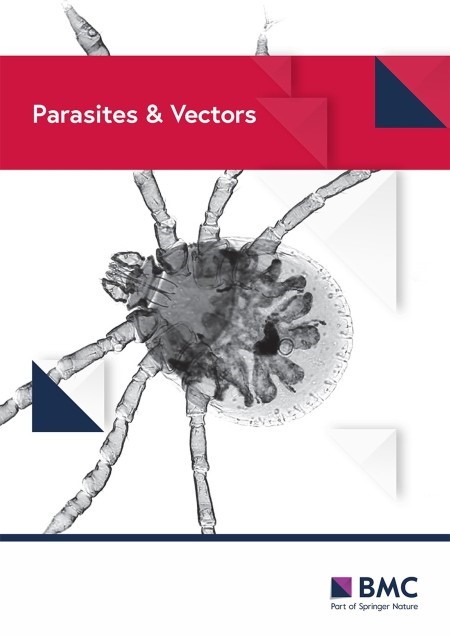A novel cystatin in Psoroptes ovis var. cuniculi: molecular characterization, serodiagnostic potential, and its anti-inflammatory property on rabbit peripheral blood mononuclear cells
Xiaobin Gu, Fusheng Yang, Ce Wang, Jing Xu, Yane Li, Youping Liang, Je Fan, Fangyan Wu, Ran He, Hui Wang and Yue Xie

Abstract
Background
The ectoparasite Psoroptes ovis var. cuniculi causes substantial economic losses to the global rabbit industry. Currently, microscopy for identifying Psoroptes mite in skin scrapings, as the “diagnosis gold standard,” remains a challenge owing to its poor sensitivity in detecting low-level and/or early stage mite infestations. Additionally, Psoroptes infestations rapidly trigger cutaneous inflammation, thus the mites might produce some molecules to deal with the harmful effects of inflammation for their long-time survival on the host skin, but these molecules are still mostly unknown.
Methods
To seek a sensitive diagnostic method and illuminate the new antiinflammatory molecules, we characterized a novel cystatin of P. ovis var. cuniculi (PsoCys) using bioinformatics and molecular biology methods.
Results
The results showed that PsoCys comprised the classical features of the type II cystatin superfamily including an N-terminal glycine residue, a central QXVXG motif, and a C-terminal LW motif. In mixed stages of mites, the transcription level of PsoCys was significantly higher in “fed” mites than in “starved” mites (P < 0.001), and among the different life-cycle stages of “fed” mites, the expression of PsoCys was higher in adult males than in larva, nymph, and adult females (P < 0.001). The established indirect ELISA based on recombinant PsoCys (rPsoCys-iELISA) presented 95.4% sensitivity and 95.7% specificity. The area under the receiver operating characteristic curve (AUC) for this method was 0.991, indicating its excellent diagnostic performance. Moreover, rPsoCys-iELISA had advantages over microscopy for detecting low-level and/or early stage mite infestations (90% versus 40% in artificial infestation cases at 3 weeks post-infestation; 61.9% versus 22.6% in clinical cases). In addition, rPsoCys could inhibit the activity of papain and cathepsin B in vitro, and significantly suppressed mRNA levels of toll-like receptors (TLR 1, 2, 4, and 6) and downstream molecules (NF-κB, p38, MyD88, IL-10, and IFN-γ) in LPS-stimulated rabbit PBMCs, indicating its anti-inflammatory property.
Conclusions
Our findings indicated that PsoCys was a novel type II cystatin of Psoroptes mites, and it served as a potential serological diagnostic antigen for detecting low-level and/or early stage mite infestations, as well as a novel anti-inflammatory molecule of Psoroptes mites.
Keywords:Psoroptes ovis var. cuniculi, Cystatin, Inhibition activity, Serodiagnosis, Antiinflammatory property
Citation:Gu, X., Yang, F., Wang, C. et al. A novel cystatin in Psoroptes ovis var. cuniculi: molecular characterization, serodiagnostic potential, and its anti-inflammatory property on rabbit peripheral blood mononuclear cells. Parasites Vectors 17, 397 (2024).
Read full text: https://link.springer.com/article/10.1186/s13071-024-06483-3?utm_source=rct_congratemailt&utm_medium=email&utm_campaign=oa_20240919&utm_content=10.1186%2Fs13071-024-06483-3#citeas
